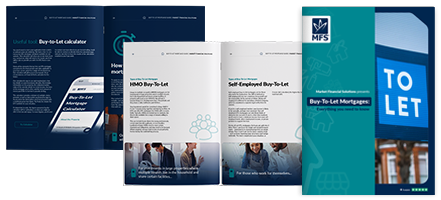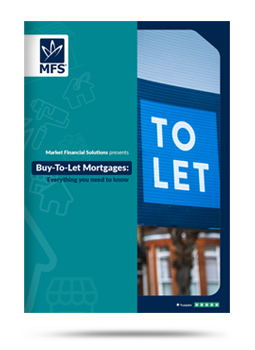Disclaimer
Market Financial Solutions are a bridging loan and buy-to-let mortgage provider, not financial advisors. Therefore, Investors are encouraged to seek professional advice. The information in this content is correct at time of writing.

Creating a comprehensive landlord checklist is no small task. There are countless laws, strategies, and obligations to take into account. And some of which, it may not be possible to plan ahead for. While others could best be delegated to agencies.
But, there are a few key factors that should be included within every landlord’s checklist. The entire property investment’s life cycle requires due diligence, before a purchase, in the initial period following an investment, and the ongoing, long-term management.
Getting on top of all these elements will provide landlords with the best chance of success. To start with, investors should consider the market they’re moving into. Regardless of whether they’re a first-time buyer, or seasoned portfolio landlord.
1. Prepare before investing
Prior to any investment, market research is crucial. Landlords will likely want to have a clear understanding of, and plan for, who they’re targeting and where. Winging it may not be a good idea.
1.1. The tenant
A landlord checklist could start with creating a profile on desirable tenant types. Some landlords may want to rent to students in the hope of receiving income during the academic year[1]. Whereas others may want to target a growing retiree rental market[2].
But, these options will likely require separate strategies. Student housing investments may work well in large cities with substantial student populations and plenty of HMOs. Meanwhile, investors targeting older tenants may have better luck with bungalows situated in quieter seaside towns.
1.2. Funding
Once investors find a property that matches their circumstances and goals, they’ll need to focus on their finances. High street banks will be able to provide standard lending products but for those in need of more flexible options, specialist lenders may be more suitable.
1.3. Taxes
On top of this, landlords will need to consider their tax obligations, potential insurance costs, and more.
It can be difficult to keep on top of all this, however. Taxes alone will be varied by where an investor is based, their circumstances, and political changes.
1.4. Management
Rental agencies can help manage these costs, but they’ll levy a charge for their services. Investors will need to determine if working with an agency should be a part of their landlord checklist.
1.5. Local registration
Finally, landlords should check in with their local authority to see if they need to be registered. Currently, in Wales, immediate landlords (those who are entitled to possession of a rental property) must be registered with Rent Smart Wales[3]. Meanwhile, across England and Wales, HMO properties may also need to be registered with councils[4]. Making sure they’re on top of these requirements can prevent costly repercussions down the line.

2. Landlord checklist: The tenancy
Before landlords get on with the business of securing tenants for their property (or properties), they’ll want to get up to speed on their responsibilities. Landlord’s must, by law, keep on top of certain obligations.
2.1. Fulfilling obligations
Chiefly, they must[5]:
- keep their rented properties safe and free from health hazards
- make sure all gas equipment and electrical equipment is safely installed and maintained
- provide an Energy Performance Certificate for the property
- protect their tenant’s deposit in a government-approved scheme
- check their tenant has the right to rent the property if it’s in England
- give their tenant a copy of the “How to rent checklist” when they start renting from them
These minimums require different kinds of tests and paperwork. Therefore, landlords should reach out to local authorities for guidance to find out which rules and regulations apply to them. Also, investors should add getting on top of the rules for the following to their landlord checklist:
- Making repairs[6] – including when they can enter the property, and what happens if repairs are not done properly
- Rent increases[7] – including when they can increase rent, and under what circumstances
- Settling disputes[8] – including when going to court may be required
- Paying tax and National Insurance[9] – including when it may be possible to claim expenses for certain costs
- Changing a regulated tenancy[10] – including keeping on top of special rules for changing rents and terms for regulated tenancies
2.2. Prepare for the tenant
When landlords are on top of all the T&Cs, they could then focus on welcoming in tenants. The next items on their landlord checklist could be getting tenancy agreements prepared, and selecting a preferred tenancy deposit scheme[11].
2.3. Polish up your place
Of course, landlords need to make their properties desirable for tenants in the first place, otherwise all these efforts will be moot. Any landlord checklist should make space for furnishing plans, marketing properties via the best channels (Zoopla[12], Rightmove[13] etc), and following up with enquiries.
3. Landlord checklist: Ongoing management
Once renters have moved in, landlords will need to focus on the ongoing management of the property, and their relationship with the tenants. It’s probably best to set expectations with tenants early on, so no one is hit by unexpected, nasty surprises.
3.1. Tenancy agreement
A tenancy agreement will make this easier. It can spell out in plain English what’s expected from the tenants, and the rules they must follow.
3.2. Manage upcoming issues
On the flipside of this however, landlords should respond to issues quickly as they emerge. Where maintenance issues are dealt with promptly, it’ll likely result in happier tenants, and a harmonious relationship.
3.3. Regular checks
Also, it may be possible to get ahead of problems by conducting regular checks and inspections. Landlords need to remember though, that tenants must be made aware of a visit ahead of time.
Investors don’t need to do all this alone
These are just the basics of what should be included in a landlord checklist. Thus, it’s advisable for landlords to seek expert guidance from investment advisors, accountants, wealth planners and the like.
But, when these property investors are comfortable with their plans, and have everything on their landlord checklist ticked off, we will be there to provide them with the specialist finance needed to take their investments to the next level.
The Complete Guide to
Buy-to-Let Mortgages
Everything you need to know
- Fundamentals
- Different mortgage types
- Useful tools
- Industry stats & more
[1] https://www.hepi.ac.uk/2023/10/26/student-rents-now-swallow-up-virtually-all-of-the-of-the-average-maintenance-loan-as-market-reaches-crisis-point-in-affordability/#:~:text=In%202021%2F22%2C%20average%20annual,year%20(2023%2F24)
[2] https://www.ftadviser.com/mortgages/2024/01/10/more-pensioners-are-renting-in-retirement-what-can-be-done/
[3] https://rentsmart.gov.wales/en/home/
[4] https://www.gov.uk/find-licences/house-in-multiple-occupation-licence
[5] https://www.gov.uk/renting-out-a-property
[6] https://www.gov.uk/renting-out-a-property/making-repairs
[7] https://www.gov.uk/renting-out-a-property/rent-increases
[8] https://www.gov.uk/renting-out-a-property/settling-disputes
[9] https://www.gov.uk/renting-out-a-property/paying-tax
[10] https://www.gov.uk/renting-out-a-property/changing-regulated-tenancy
[11] https://www.admiral.com/magazine/guides/home/landlord/landlord-checklist-what-you-need-to-get-started
[12] https://www.zoopla.co.uk/to-rent/
[13] https://www.rightmove.co.uk/property-to-rent.html





